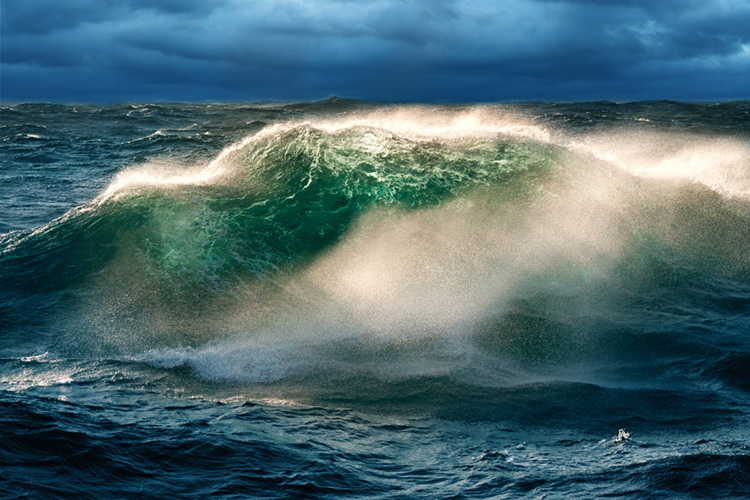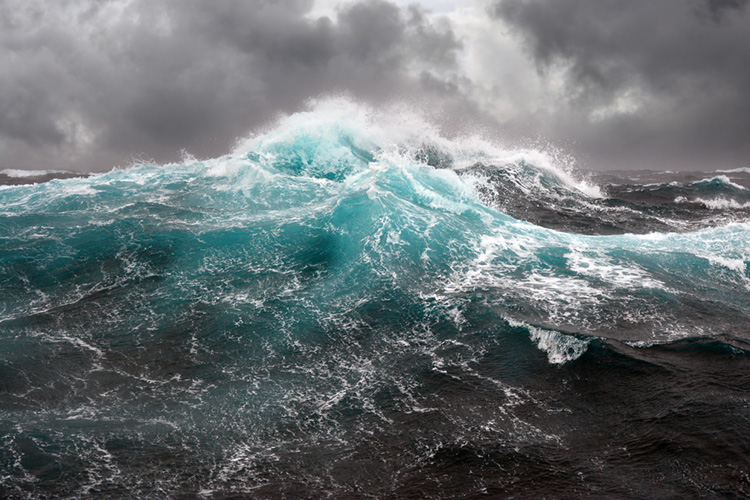Sailors have always told stories about rogue waves. They have been occasionally battered by enormous walls of water and barely survived to tell the story.
A rogue wave, also known as a freak wave, is often classified as a wave that is two to three times taller than the tallest average wave.
So, technically, it can be a 15-foot (4.5 meters) wave rolling alongside other small waves or a 50-foot (15.2 meters) mountain of water traveling in rough seas.
Rogue waves are big and powerful enough to sink ships, ocean liners, and even oil platforms. They form spontaneously and randomly in the open ocean without a clear and obvious cause.
Scientists say that the so-called rogue wave forms upon a wave phenomenon/principle known as superposition.
When two standard waves combine crest-to-crest, they merge and double in size. And when they combine trough-to-crest, they cancel out.
However, if a group of waves meets at the right place and at the right time, they could generate a gigantic, unpredictable wave.
Rogue waves are not so rare and have been at the center of a long scientific controversy. Do they really exist? Or are they simply large waves?

The Event That Changed Everything
On January 1, 1995, an 83.6-foot (25.5 meters) wave crashed against a Draupner oil platform on the North Sea, off the coast of Norway.
Scientists noticed that the wave was twice as high as any wave ever measured in that part of the ocean.
The event put an end to the dilemma. After all, rogue waves are real, and nobody can deny their existence anymore.
In 2001, a study by the European Space Agency (ESA) found more than ten high-amplitude rogue waves in three weeks. ESA used satellite data to monitor and detect the phenomenon.
But rogue waves are the result of a truly complicated and nonlinear process that also involves other well-known factors like wind, tides, bathymetry, differences in water temperature, etc.
So, the superposition concept does add and cancel out waves but to explain the formation of rogue waves, it should take into consideration all the above variables.
The formation of deepwater rogue waves is a semi-regular phenomenon off the coast of South Africa, where the Agulhas Current intersects with opposing trade winds, but can also occur in the Atlantic Ocean and the North Sea.
Predicting Rogue Waves
Recent studies suggest that these non-surfable, solitary waves form in storm systems and may not be entirely unpredictable. However, some researchers believe that they don't need a storm to be created.
In 2016, Mechanical engineers at the Massachusetts Institute of Technology (MIT) developed an algorithm that predicts where and when a rogue wave might strike.
The development gives sailors a two-to-three-minute warning before impact, increasing their chances of survival.
How does it work? The tool sifts through data from surrounding waves, and depending on the wave group's length and height, the algorithm computes a probability that the wave group will turn into a rogue wave within the next few minutes.
Finally, it's important to stress that rogue waves are different from tsunamis. Tsunamis are triggered by earthquakes or landslides and roll steadily until they hit the shore.
